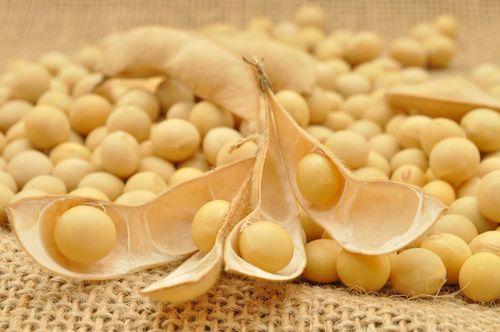The tamari it is obtained from the seeds of yellow soy and is used as a sauce for cooking and seasoning foods, even in place of salt. Let's find out better.
> 1. What is tamari
> 2. Properties and benefits of the tamari
> 3. Tamari, allied with
> 4. Curiosities about the tamari
Yellow soy for the production of tamari

What is tamari
Glycine max or yellow soy is a herbaceous plant native to the Far East (Japan, China, Indonesia). The seeds of this plant are obtained tamarius, a sauce fermented up to 3 years in cedar barrels.
Il tamari e lo shoyu are two liquid sauces of dark color, practically black, derived from the yellow soy that they serve flavor cereals, legumes, vegetables and other cooked and raw foods.
The tamari has a pleasant and distinct flavor, while shoyu is less flavorful and more delicate, a lighter version also has nutrient content. Oriental cuisine and in particular the macrobiotics, make a high use of these products, in the various traditional culinary preparations.
Properties and benefits of tamari
The tamari contains numerous types of ferments and promote digestion increasing the secretion of gastric juices; it also strengthens the intestinal bacterial flora.
It is used as a dietary supplement, as it contains proteins, enzymes, vitamins (it also seems the precious B12) and other trace elements. The mineral salts are numerous, while the percentage of sodium chloride (16%) leads it to be a meritorious substitute for salt, also useful in nutrition for hypertensive people (for those who suffer from high blood pressure).
Another value of the tamari is its high antioxidant value, it is even estimated 10 times higher than that of wine. The original recipe does not contain wheat, so if the preparation is only based on yellow soy it is possible to use the tamari also in celiac diet, as it does not contain gluten.
On the contrary, shoyu traditionally is obtained from soy and toasted and fermented wheat and cannot be used in the diet for celiac disease. A tip is to pay attention to the quality of the product to choose a tamari made in a workmanlike manner, according to tradition, which contains all the healthy properties, because some industrial sauces that can be found in supermarkets contain dyes, correctors and seasonings that are certainly not natural. and fermentation takes place in a short time, not respecting the natural fermentation times at all.
Tamari, ally of
Heart, vessels, intestines.
Curiosities about the tamari
This sauce was born by chance when a Buddhist monk began to use the residual liquid that remained at the bottom of the barrels for the production of miso, another traditional oriental condiment.
According to macrobiotics, tamari can be useful, on the one hand, thanks to the lactic and phosphoric acids a contain excesses of alkalinityon the other hand, its salinity acts on the acidic elements present, so it brings a buffering effect to the body and acid / base balance regulator.
A recipe up your sleeve
Ingredients:
- 300 gr of rice,
- 2 courgettes,
- half onion,
- a small carrot,
- tamari and spices.
Preparation:
Prepare a sauté of finely chopped onion and carrot and cook until golden brown. Add the sliced courgettes and add the tamari (without salt). Continue cooking with the lid closed, adding a little water if needed. After a few minutes the courgettes will be tender, tasty and we can add them as a sauce to the rice prepared separately. On the plate of rice and courgette sauce you can sprinkle, fresh mint, almond seeds and toasted and chopped sesame and conclude with another drizzle of tamari.


























